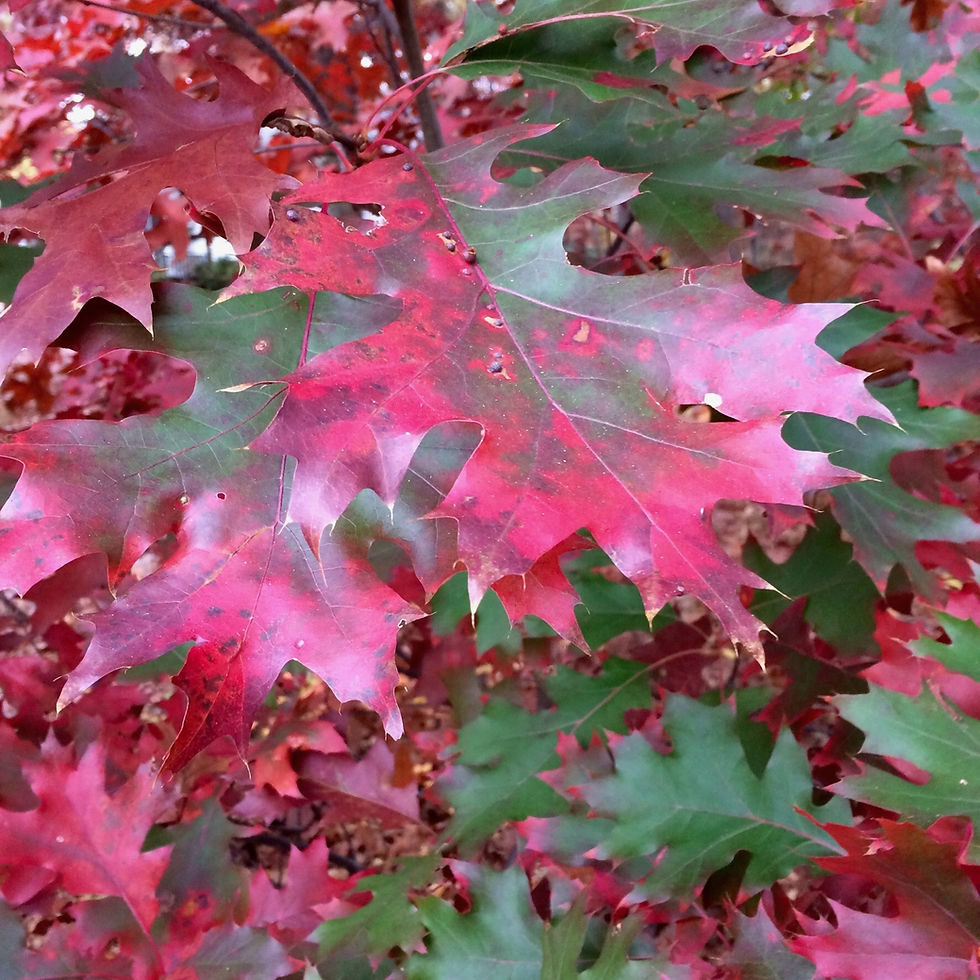Native Plant of the Week: Eastern White Oak
- Kimberly Simmen
- Oct 23, 2022
- 1 min read
Family: Fagaceae
Name: Quercus alba - Eastern White Oak
Bloom Time: April, May
Flower: Catkins are Yellowish Green, 2-4" long (male), Reddish Green, 1 1/4" long (female)
Fruit: Acorn
Soil Condition: Moist, Average, Acidic
Light: Sun
Height: 50-80' tall (sometimes to 100') with a canopy reaching to 80' wide
Native Range: Eastern United States including Long Island
Zone: 3 to 9
Quercus alba is a wildlife superstar! It is a larval host to over 300 different moths and butterflies. Birds, deer, squirrels and other small mammals eat the acorns, the largest in the Oak family. Fall color is a lovely reddish brown. This is also the oak used for wine and whiskey casks, furniture In colonial times the wood was used in shipbuilding.
Maintenance: Susceptible to wind damage. Does not like to have its roots disturbed so if you are going to be planting under it use plugs, bare root or 1 quart plants.
Benefits: long lived, host plant to several moths and butterflies including Edwards Hairstreak, clay soil tolerant, juglone tolerant (Black Walnut, Hickory), drought tolerant once established, deer resistant
Fun Fact: We can eat acorns too! They must be boiled several times to remove the tannins (see reference 3 for how to cook acorns)
Companion Plants: Carex pensylvanica - Oak Sedge, Polystichum acrostichoides - Christmas Fern, Hydrangea quercifolia - Oakleaf Hydrangea, Cornus florida - Common Dogwood, Chimaphila maculata - Striped Wintergreen
Pictures: Seedling of a white oak (Cathy Dewitt NCSU), Leaves (Cathy Dewitt NCSU), Bark (Kerry Woods NCSU), Majestic Oak (Nicholas A. Tonelli NCSU), Acorn (NatureServe NCSU), Winter Silhouette (Cyn Slaughter NCSU)
=============================================================
References:
3. The Nature of Oaks, Douglas Tallamy (2021)






















Comments